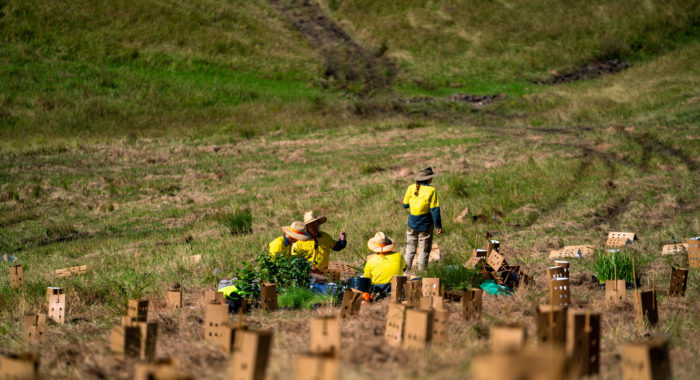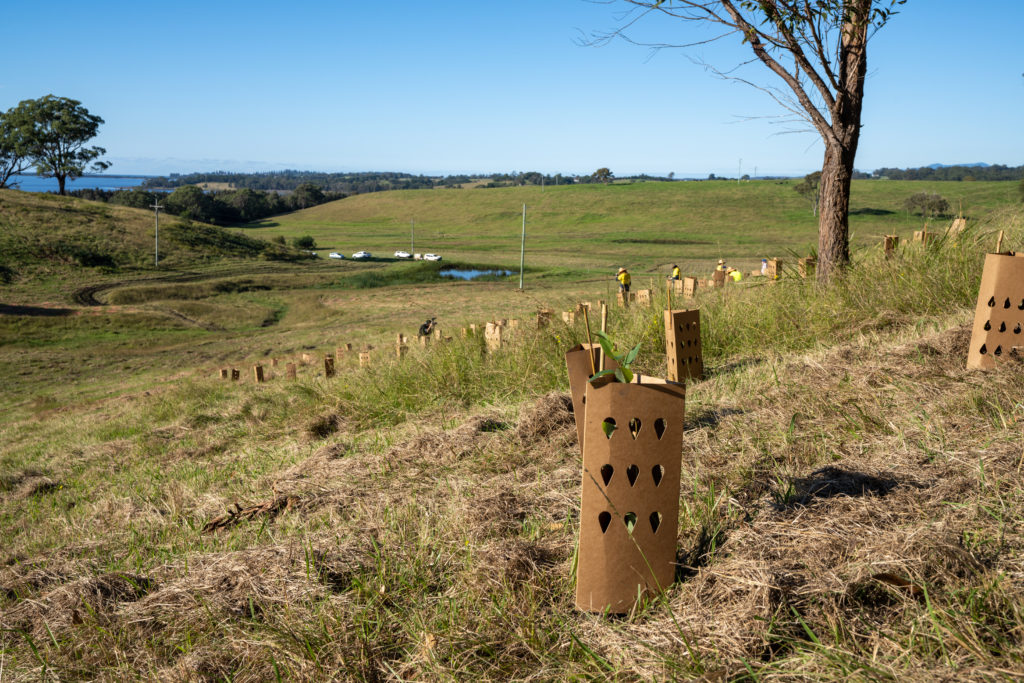
A partnership between the Great Eastern Ranges (GER) and the World Wide Fund for Nature-Australia has been significantly expanded to reconnect and regenerate fire-damaged landscapes across NSW.
‘Cores, Corridors and Koalas’ is working to restore the health and resilience of habitat for koalas, greater gliders, quolls and other forest-dependent wildlife on the NSW South Coast, Border Ranges, Greater Blue Mountains and Coffs Coast Hinterland.
This includes reconnecting tens of thousands of hectares of habitat including through the establishment of 150,000 trees and shrubs, the engagement of close to 400 landholders in capacity building and conservation efforts, and the installation of nest boxes.
One of the first properties to be transformed sits between Deua National Park and coastal habitat near Moruya on the NSW South Coast. Three thousand trees will be planted on the property, which was once cleared for dairy cows.
James and Vanessa Findlay, who bought the farm two years ago, hope the property will become a thriving corridor for wildlife including koalas and greater gliders.

“We’re lucky that only 70 of our 220 acres were cleared. These grass fields are currently a barrier for native animals so our ultimate goal is to have wildlife corridors running across all of those 70 acres,” said Ms Findlay.
Trees and shrubs are also being planted at several other local properties that were previously cleared for farming. The plantings are being done by EcoCrews, a social enterprise of Campbell Page funded by the NSW Government’s Bushfire Local Economic Recovery Fund which provides eco-friendly jobs and training for young locals.
Gary Howling, CEO of the Great Eastern Ranges, said Cores, Corridors and Koalas will eventually directly reconnect habitat across 30,000 hectares in the four fire-affected regions with benefits combining to create impact across thousands more.
“By working in multiple priority locations through our regional partnerships, we are creating corridors of effort to restore landscapes at the scale needed after the bushfires,” said Mr Howling.
“The farm near Moruya is what we call an anchor property – a property that forms a central focus for on-ground works from which we radiate our efforts out. This property is a classic example – it forms an important connection between the escarpment and the coastal reserves and provides vital habitat for local wildlife.

Tim Cronin, WWF-Australia’s Head of Healthy Land and Seascapes, said reconnecting intact habitat would help to build wildlife resilience to future extreme weather events.
“These corridors will enable greater movement of wildlife through the landscape. This will not only build genetic diversity among wildlife populations, it will also give these animals a better chance of escaping fires, floods and other disasters that are becoming more frequent, intense and unpredictable,” said Mr Cronin.
“There’s a lot of iconic wildlife that could use these corridors once they’re set up. We focus a lot on these flagship species, but for every koala, there are thousands of other lesser-known species that are just as important. What we’re doing here is part of the solution to turning around Australia’s ecological decline.”
“We’ve cleared tens of millions of hectares across Australia. We have got to the point where we not only need to stop clearing, but also undo the damage we’ve done. It may be impractical to put that many trees back in the ground, but by restoring relatively small but strategic areas, we can reconnect thousands of hectares of habitat and make a much larger impact for the benefit of local communities and nature.”
Cores, Corridors and Koalas is being led on the NSW South Coast by Coastwatchers Association Inc in association with the Eurobodalla Shire Council, South East Local Land Services and Campbell Page’s EcoCrews.
EcoCrews is a social enterprise of Campbell Page providing eco-friendly jobs to locals living in the Eurobodalla and Bega Valley with funding from the Australian and NSW government’s Bushfire Local Economic Recovery (BLER) fund.



 Media release
Media release